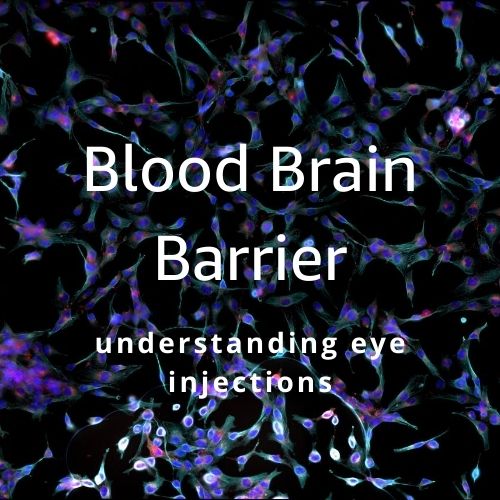Why We Need Eye Injections


Why do we need to inject medications directly into the eye?
Presently, retina specialists treat wet macular degeneration, diabetic retinopathy and retinal vascular occlusions with intravitreal injections. Durysta is a now injected for the treatment of glaucoma.
The blood brain barrier prevents most drugs from getting into the eye by the “usual” methods including eye drops, pills, ointments and intravenous delivery.
The eye, and the brain, are protected by the same cellular barrier known as the blood brain barrier (BBB) or the blood retina barrier (BRB). For the purposes of this article, they are exactly the same.
Blood Brain Barrier
The blood-brain barrier is a layer of protection between the circulating blood of the body and the brain (or retina). It prevents the entry of toxins into the brain, but it also blocks the entry of many types of medications.
For instance, consider the treatment for wet macular degeneration. Anti-VEGF medications, like Avastin, stop the proliferative growth of abnormal, weak, and leaky blood vessels. Avastin otherwise must be given intravenously.
In order to get enough medication into the eye, the blood retinal barrier must be circumvented by injecting directly into the eye.
The retina contains the neural circuitry that converts incoming light into electrical impulses and sends those pulses to the brain via the optic nerve.The central part of the retina is the area that is affected by wet macular degeneration and it is the area that creates your central vision.
The BBB is lined with closely packed and fused endothelial cells which create a highly selective and near impermeable boundary between the brain (and the eye) and the bloodstream.
Selective Entry
The BBB makes selective exceptions for entry. It allows water and fat-soluble molecules that dissolve in the cell membranes to cross its boundary. That includes oxygen and anesthesia. Alcohol, caffeine, and nicotine also easily cross the BBB because they are lipophilic (attracted to fat) and mix easily with the fat in the BBB to gain entry.
Although there are some promising studies, at this time there are no eye drops or oral medications with the specific molecular structure that will penetrate the BBB and deliver medication directly to the retina.
Targeted Therapy
The only way to get sufficient medication directly to the retina is by intravitreal injection. An intravitreal injection is literally a shot of medicine into the eye. The medication is injected into the jelly-like fluid (vitreous) that fills the inside of the eye and diffuses to the retina.
Injecting medication into the eye bypasses the BBB and delivers the treatments directly to the retina. For wet macular degeneration that means delivering anti-VEGF medications to block abnormal blood vessel growth—the root cause of wet macular degeneration.
In addition, the amount of medication injected into the eye is miniscule compared to the amount of systemic therapy that would be required for the same amount to accumulate into the eye, thus allowing therapeutic treatment without systemic side effects.
The intravitreal injections can be done in your doctor’s office and are a safe, effective, and relatively painless way to prevent leaky blood vessel damage to your retina that in turn causes vision loss.
The next advance in wet macular degeneration treatment is in the experimental phase—an implanted reservoir that delivers sustained-release medication to the retina.
